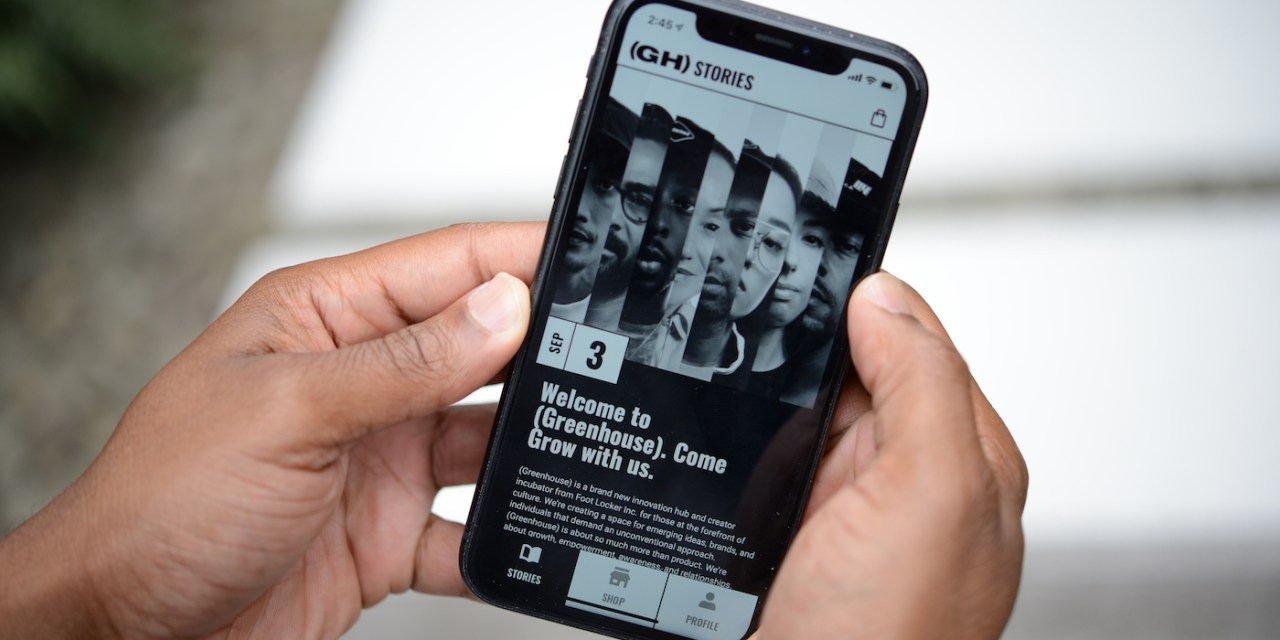With Greenhouse, Foot Locker is rethinking how it works with startups

On Wednesday, Foot Locker is launching Greenhouse, a new incubator for emerging brands. Greenhouse will live as a standalone shopping app, where it will release limited-edition product drops in partnership with select brands and designers. The program was first announced back in March.
Greenhouse will feature products from both streetwear designers like Dao-Yi Chao of Public School, as well as bigger brands like K-Swiss and Adidas. Most, but not all of the products sold will be sneakers and apparel, and many of them will also be tied back to some cultural or social mission. Chao, for example, is releasing a pair of shorts made from recycled materials, while NYC streetwear brand Alife is selling a crewneck through Greenhouse. Some of the best performing products may eventually be sold in Foot Locker stores.
Greenhouse is one of a number of ways that Foot Locker is trying to reinvent itself as a destination for more than just athletic gear. In order to bring more customers in store, it has to position its stores a a place for events, and a place to find exclusive, stylish product. Foot Locker hit a record total for annual sales in 2018 with $7.9 billion, though it struggled last quarter as total sales decreased 0.4% year-over-year. Foot Locker’s business is being threatened as major sneaker brands like Nike and Adidas are looking to sell more through their website and stores.
So, it needs to build relationships with younger brands in order to control more of its own inventory, as it prepares for a future where major sneaker brands may make up less of its sales.
So Greenhouse also serves another purpose: to allow Foot Locker to discover and work with emerging brands sooner. Big-box retailers like Foot Locker have historically only been able to work with vendors who can carry enough product to sell in multiple stores.
Other retailers are also currently trying to solve this problem by creating new in-store sections for emerging brands. Macy’s, for example has Story, where products are rotated out every few months. Macy’s brand experience officer Rachel Schechtman created an expedited vendor onboarding process for Story, that allowed them to bring in products from more smaller business. Kohl’s also recently announced that it was launching a new “Curated by Kohl’s section in select stores, that would contain a rotating assortment of products from emerging brands that have been highlighted by Faceboook as being promising.
With Greenhouse, Foot Locker is trying to reach a consumer that “spends a little bit more than the [Foot Locker] consumer, is maybe more experimental in his or her style,” according to Greenhouse team lead Mel Peralta.
Foot Locker’s chief marketing officer, Jed Berger, previously told Modern Retail that the company decided not to brand Greenhouse under the Foot Locker name because they thought customers would be more receptive to an app that wasn’t under the Foot Locker name.
“Foot Locker is a legacy brand that’s not exactly perceived by younger consumers as a cutting-edge retail outlet,” Jim Cusson president of retail marketing agency Theory House said. “This allows them to test new product categories without big investments in inventory.”
While Peralta said that Foot Locker may paid marketing spend behind some Greenhouse projects, for now the plan is to use the existing following of designers and brands to promote Greenhouse. Included alongside each of the products will be a story about the designer or brand behind the product. Some of the products will also include Greenhouse branding on them.
The team is also creating a video series, called “Out of the Greenhouse,” to promote the participating brands and designers. Peralta said that Foot Locker is also looking to launch physical pop-up shops to promote Greenhouse in major metropolitan hubs like London, Los Angeles and New York City.
Cusson said that the success of Greenhouse will depend upon how “viral” some of the early product drops go. Peralta said that the Greenhouse team will be judging the success of each product story based upon how quickly each product sells out — he expects some will sell out within a few days — but also how long customers engage with the product and the content in the app.
“Our goal first and foremost is to be able to tell product [stories] in an elevated way,” Peralta said.
Foot Locker has tried to rethink the way it sells and markets products after it saw a significant sales dip in 2017. Under the direction of Berger, Foot Locker has tried to work earlier on with major vendor partners like Nike and Adidas to develop exclusive products in their stores. Foot Locker has also rethought the design of its flagship stores — now calling them “power stores,” that carry art, music and some product that’s local to that community. And, it’s invested in a slew of startups, from sneaker resale marketplace GOAT to children’s apparel company Rockets of Awesome, to learn how it can continue to stay relevant as consumer shopping habits changed.
“With increased competition from independent shops, online resale marketplaces, or even the shoe/apparel manufacturers themselves, traditional brick and mortar retailers such as Foot Locker need to reposition themselves as relevant experiential and cultural destinations,” Dan Lobring, vice president of communications for sports marketing agency Revolution said in an email.
